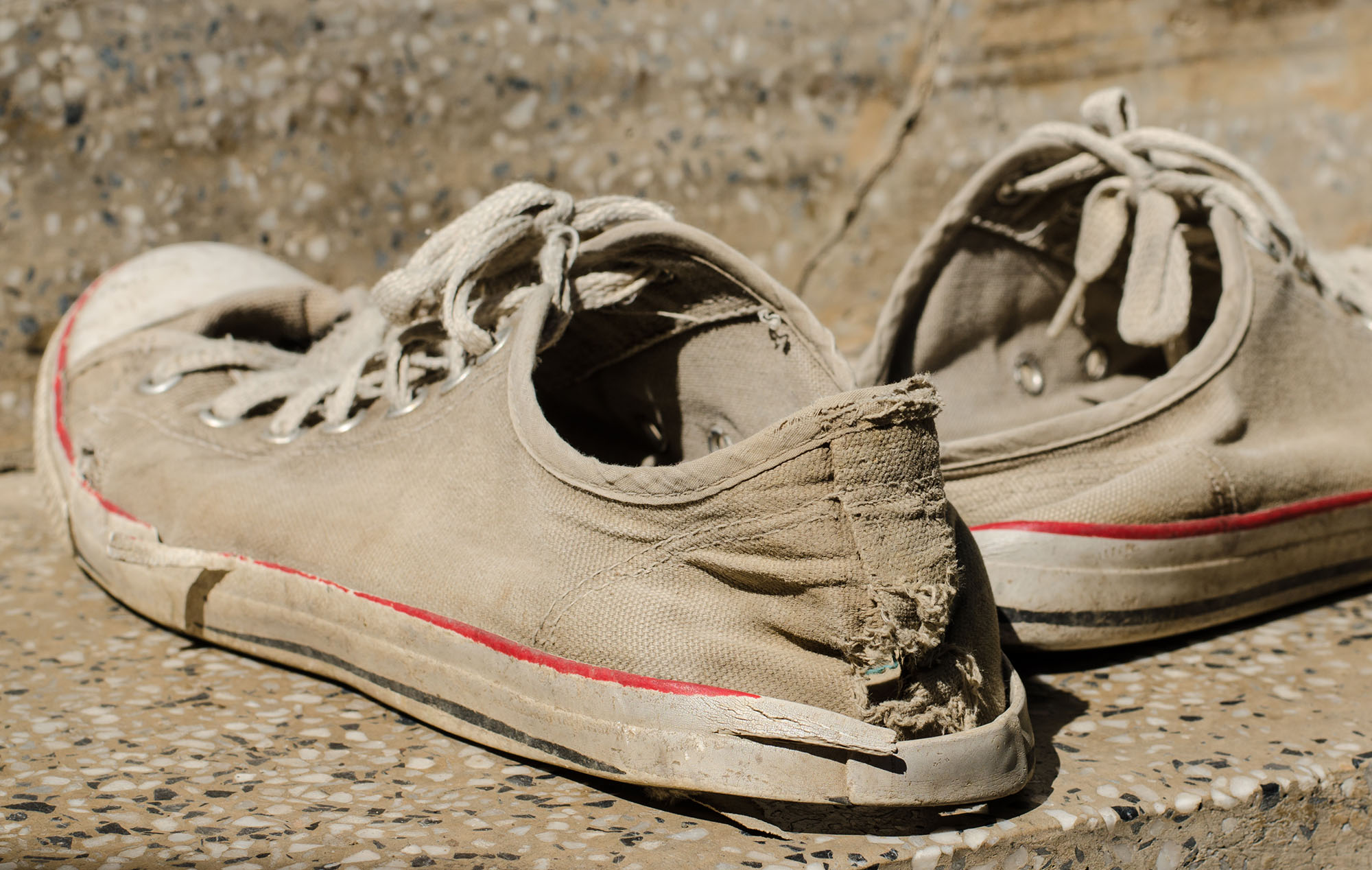
Can Worn Out Shoes Cause Back & Knee Pain?
Thursday, February 14, 2019
Did you know that poor or worn-out footwear can contribute to pain and injury throughout the body?
Most of us tend to overestimate the lifespan of our shoes – to the detriment of our feet, ankles, knees, hips and lower backs. The life of your average running shoe is 800 -1000kms, however other factors such as running surface i.e. road running vs grass or track will affect how fast your runners lose support.
- If you run 50km per week, in just 4 months you will have run 800km.
- Whereas if you only run 15km per week it will take you 12 months to achieve the same distance.
Whether you run, walk, play sport or stand around all day in your shoes, the materials in the sole of your shoe that provide cushioning (shock absorption) and support for the foot and ankle joints will slowly break down.
As a physiotherapist, I have had several patients come to me with problems such as chronic back and knee pain which turned out to be directly related to wearing old, worn out footwear to work every day. If you have pain that is worse after you have been on your feet all day, it is worth checking your footwear for signs they are past their best-by date.
We have compiled some things to look for in a shoe health check to help you decide if you need to go on a shopping spree (or not):
- Wrinkles around the edges of the sole of the shoe (especially around the middle part of the foot or heel)

- Excessive, uneven or angled wear patterns on the sole of the shoe

- Your toes are poking out (and it's not a pair of sandals or thongs), or the edges of the sole are no longer attached!


General shoe tips
- The width of your shoes makes a big difference – especially if you are wearing shoes that are too narrow for your foot. This can be observed on the outside edge of your shoe and looks like the outside of your foot is rolling over the edge of your shoe and stretching the side of your shoe.
- Cushioning – I can't emphasise this enough – if you stand a lot, especially on hard surfaces (tiles, carpet without underlay or concrete) you need shoes that will absorb impact! Trust me, your knees will thank you for it! Nurses, I'm talking to you here – I have treated multiple nurses with back pain as a result of poor footwear! Anti-stability shoes or shoes lacking in support are not suitable to wear all day in a hospital or clinic environment. If you come to me wearing the same shoes you have been wearing to work for the past 3 years, I will recommend you throw them straight in the bin!
- I'm sorry ladies but ballet flats (generally) have no cushioning, no support and are not suited to wearing as an all-day everyday shoe. Pretty as they are, they are not doing your joints any favours. Save them for times you won't be on your feet for long or try wearing a pair of joggers to and from the train/bus station and swap shoes when you get to work (the same goes for high heels).
- Sports shoes – be specific – if you are a tennis player then running shoes won't provide support in the right places for side stepping and all the lateral movements you do. Find shoes that are designed for what you are going to use them for – not necessarily the ones that match your gym tights!
What if you have a problem? Sorting out your shoes is a great place to start – if they have only just worn out or you haven't been using them for long this might be enough to get you back in the game. Our bodies can compensate and adapt for many issues but will eventually reach a point where you start to notice something is wrong. Have you heard the saying: ‘The straw that broke the camel's back'? By the time you feel pain, your body has been adapting itself for quite some time. Anything that alters your walking pattern can affect your feet, knees, or hips. Foot pain that affects how you stand or walk, can upset other areas of your body all the way up your spine to your neck.
Do your runners have wrinkles? Bring them into your local Physio Inq clinic today so we can access and educate on your options on some new shoes or an injury that has been sustained from your worn out shoes.
